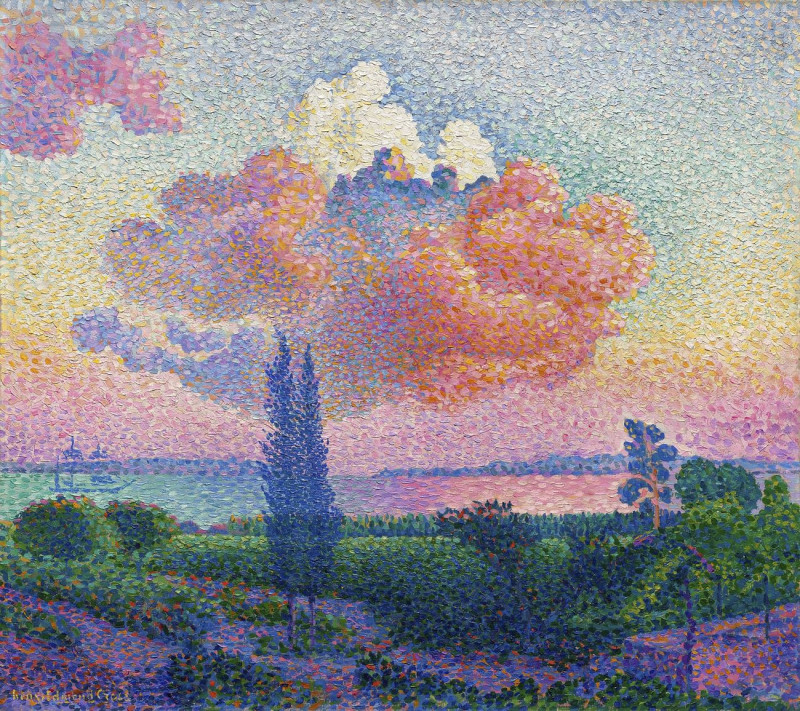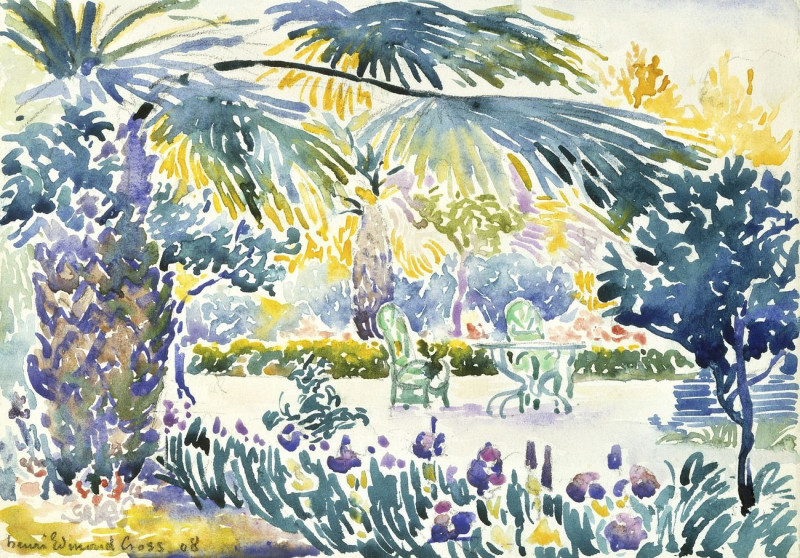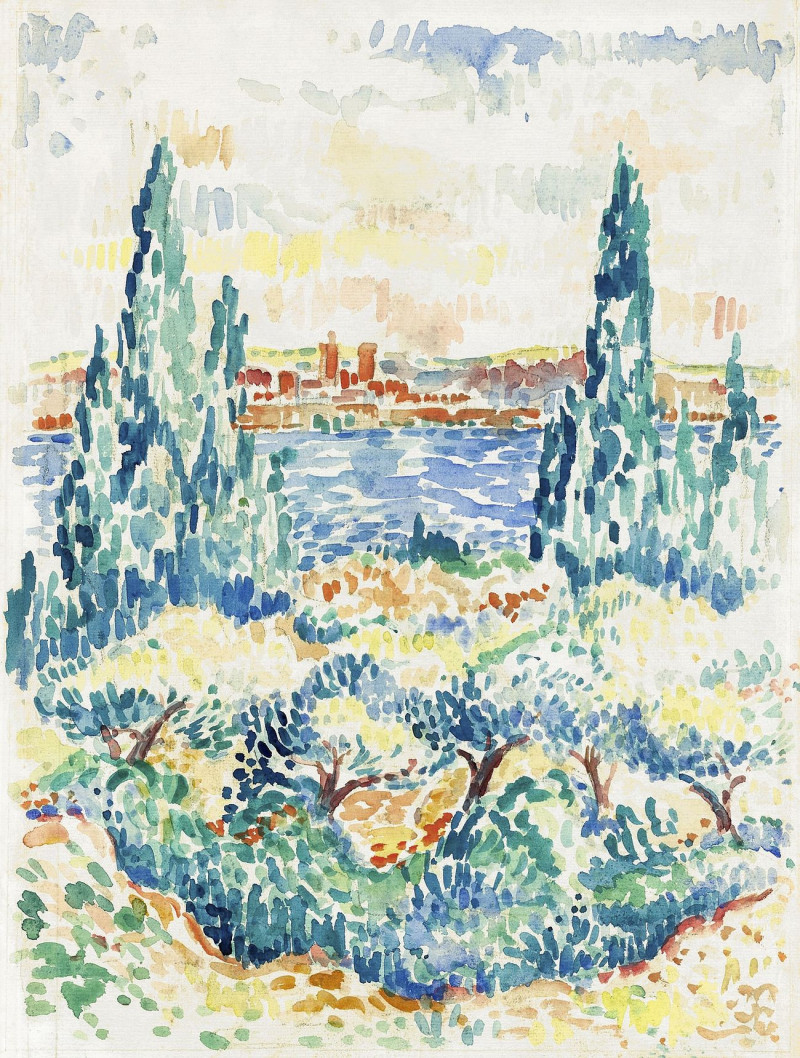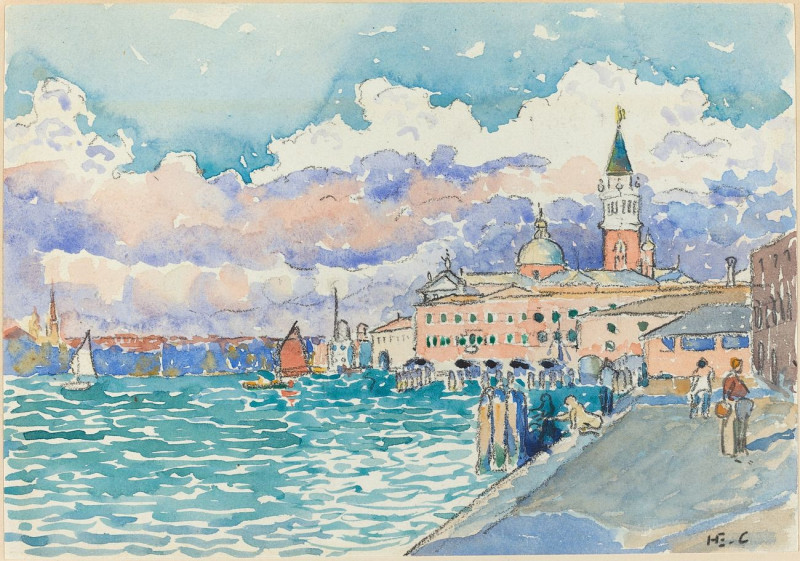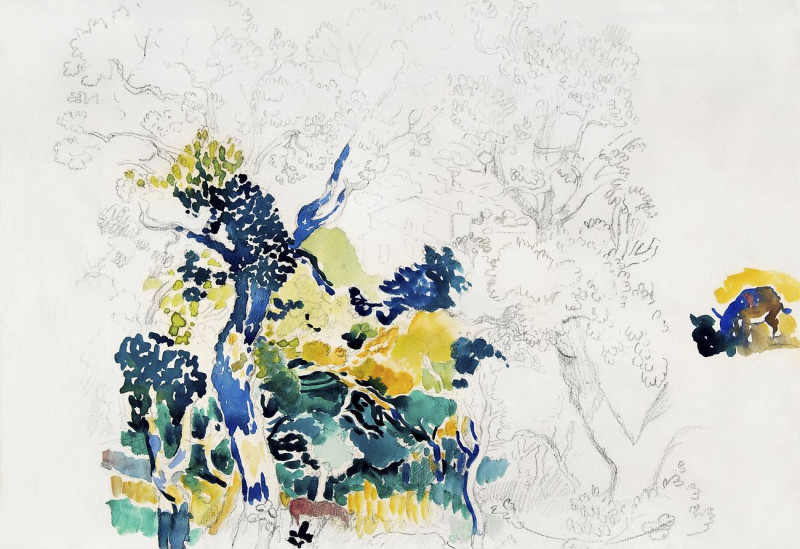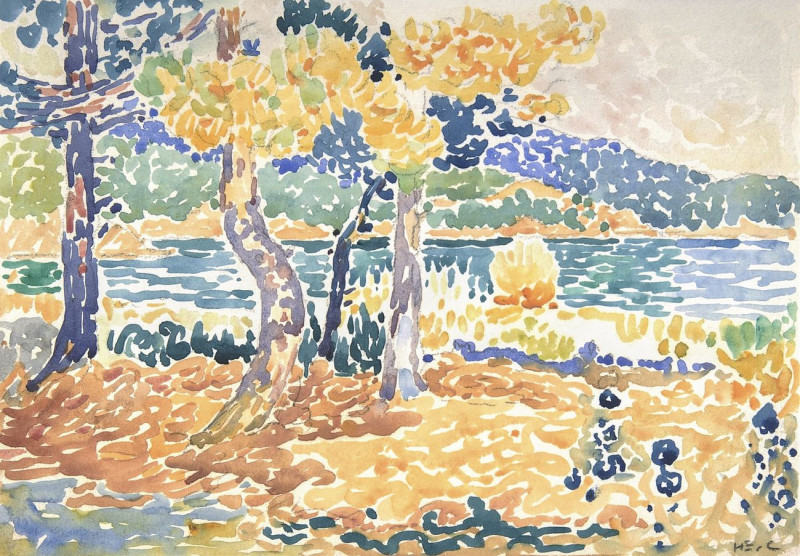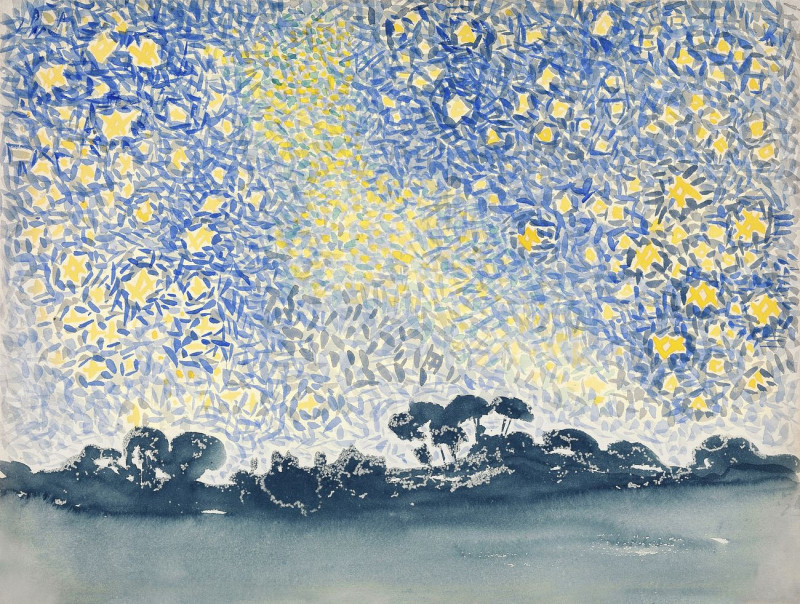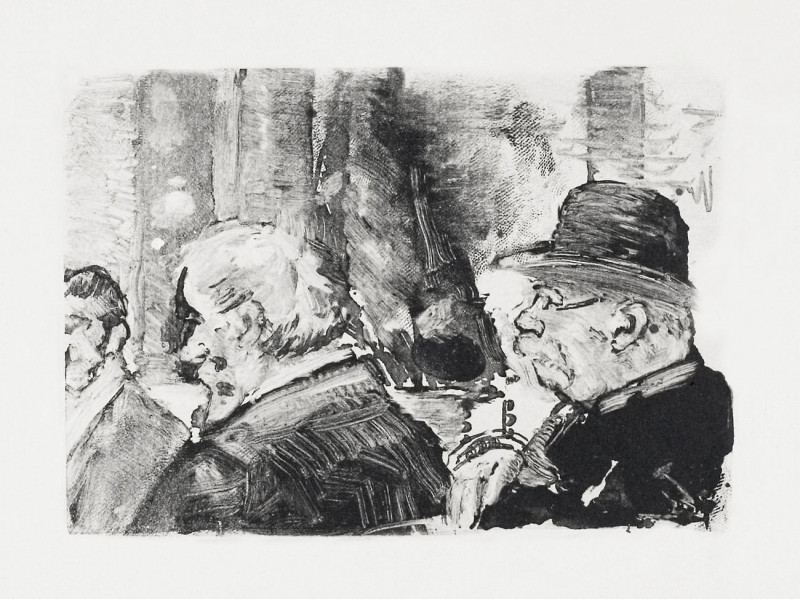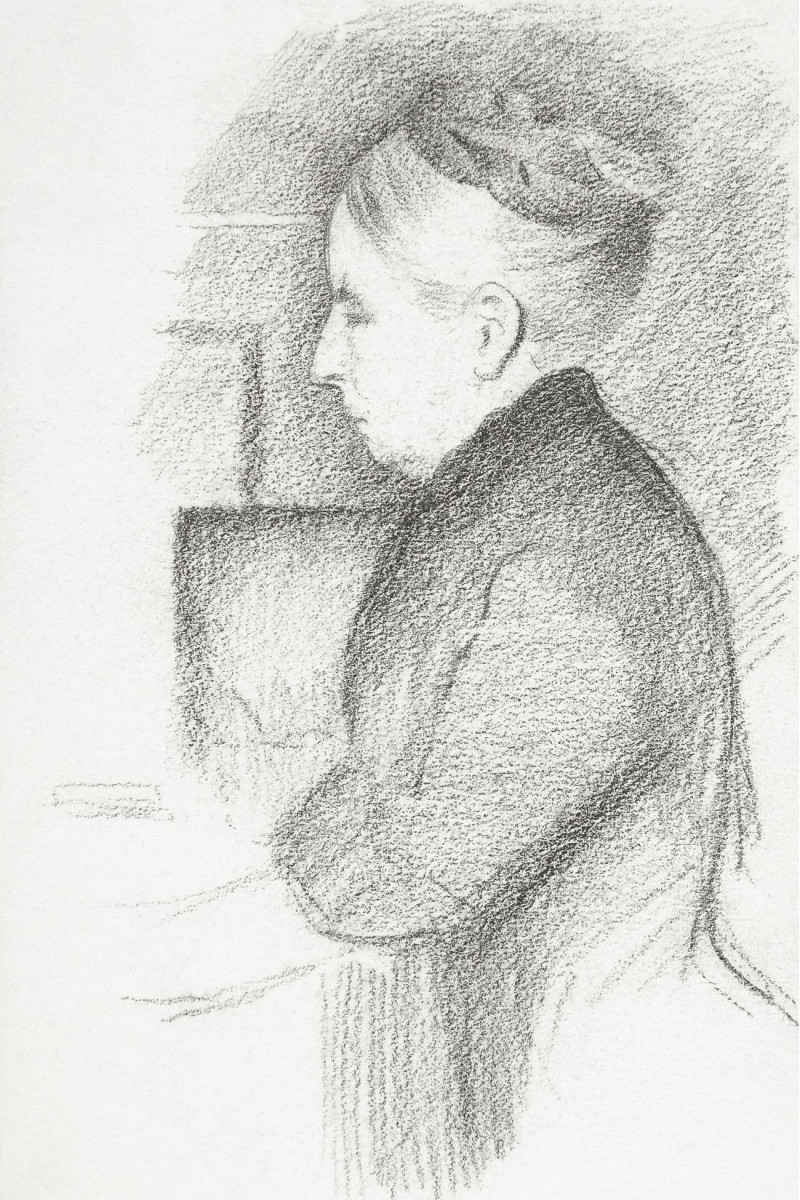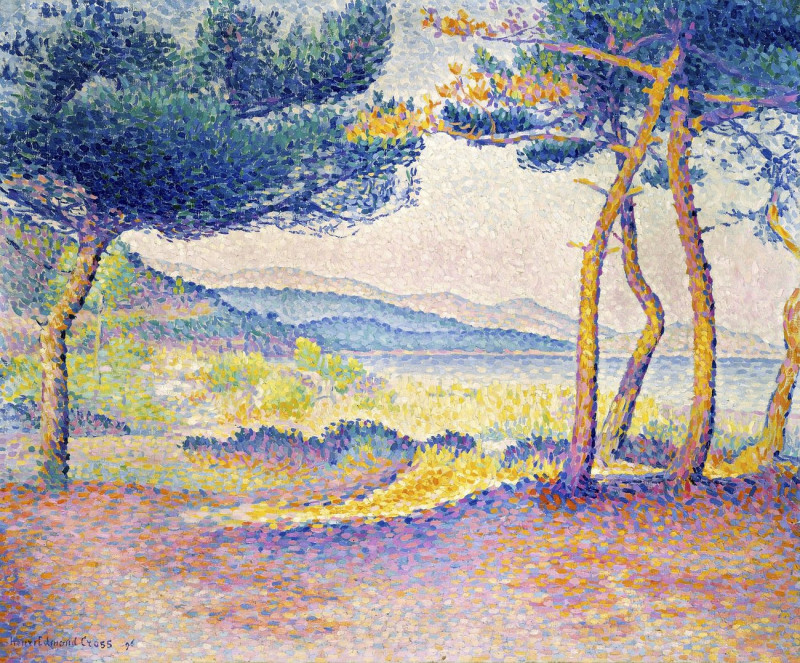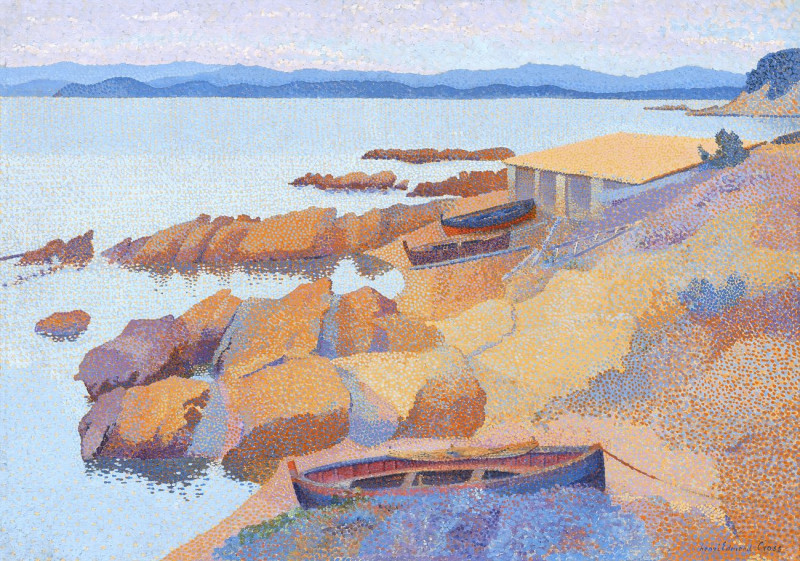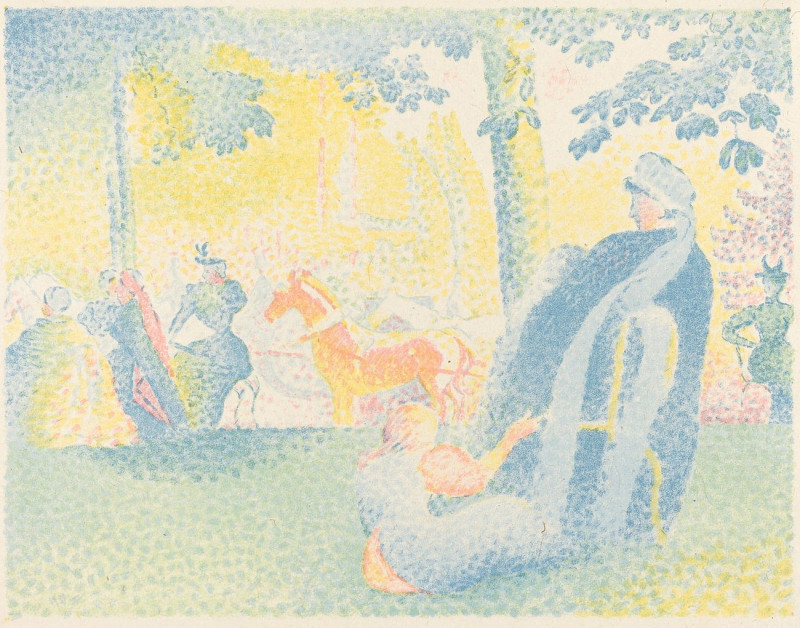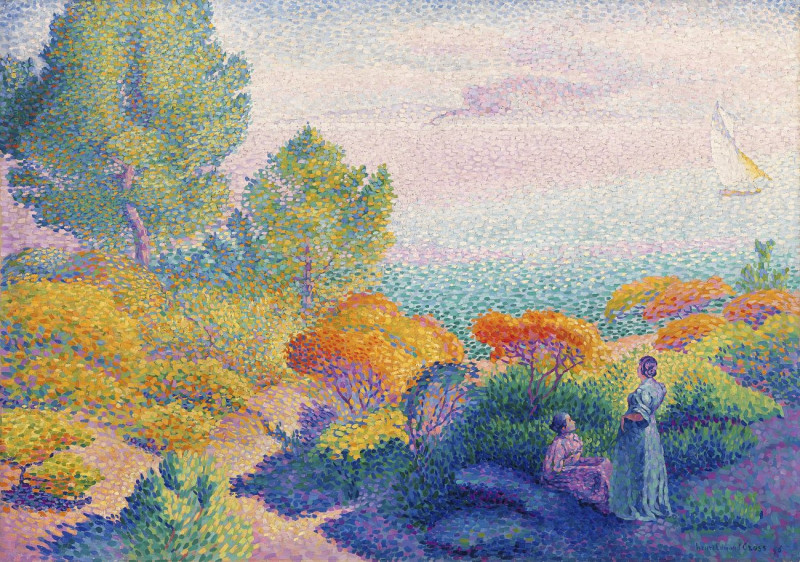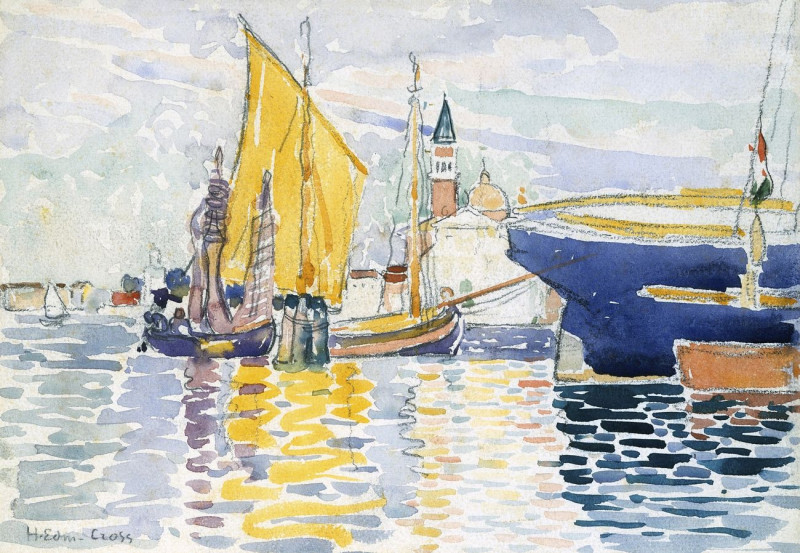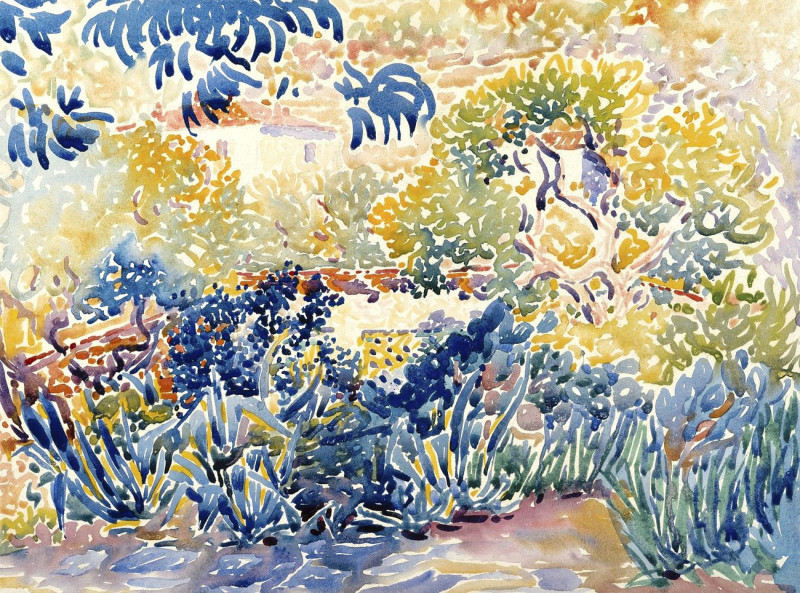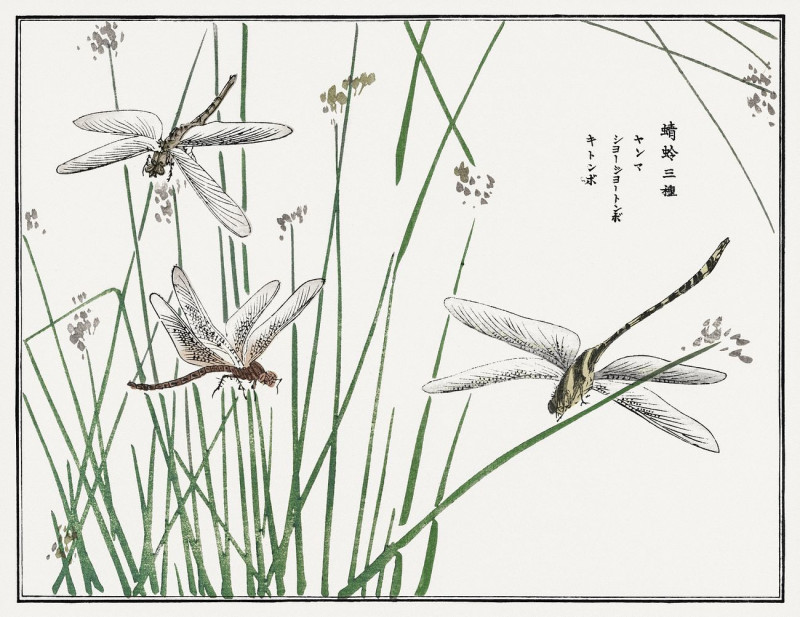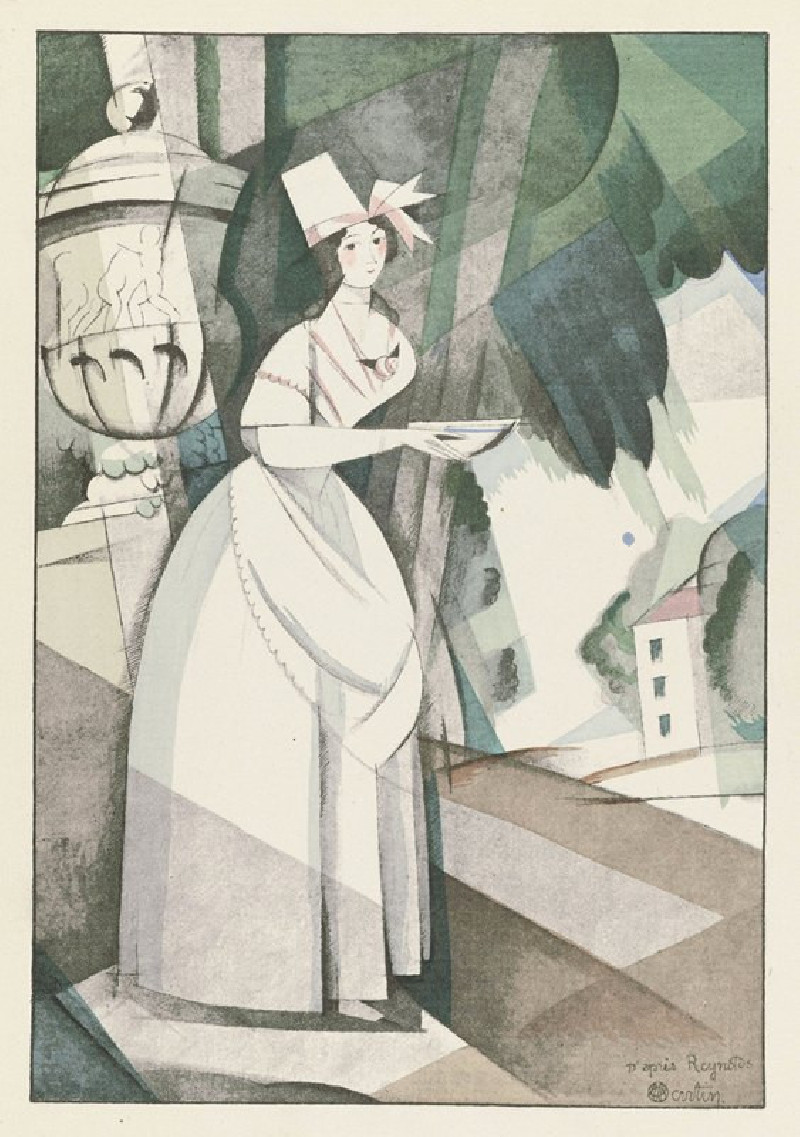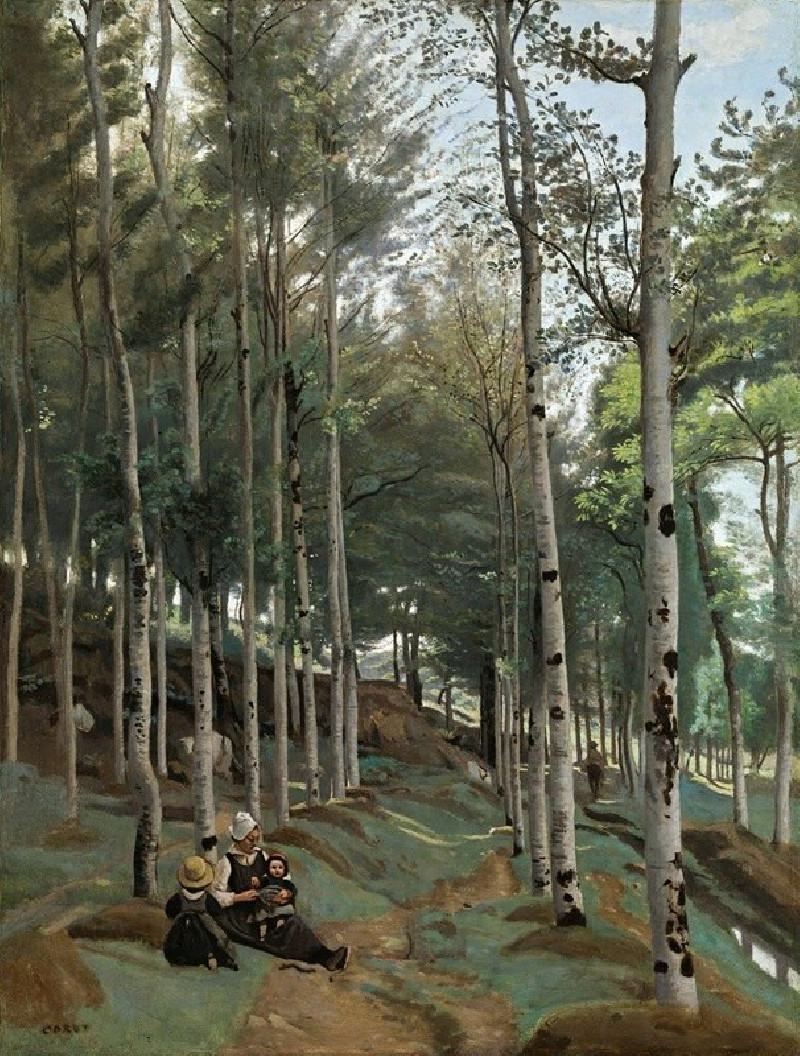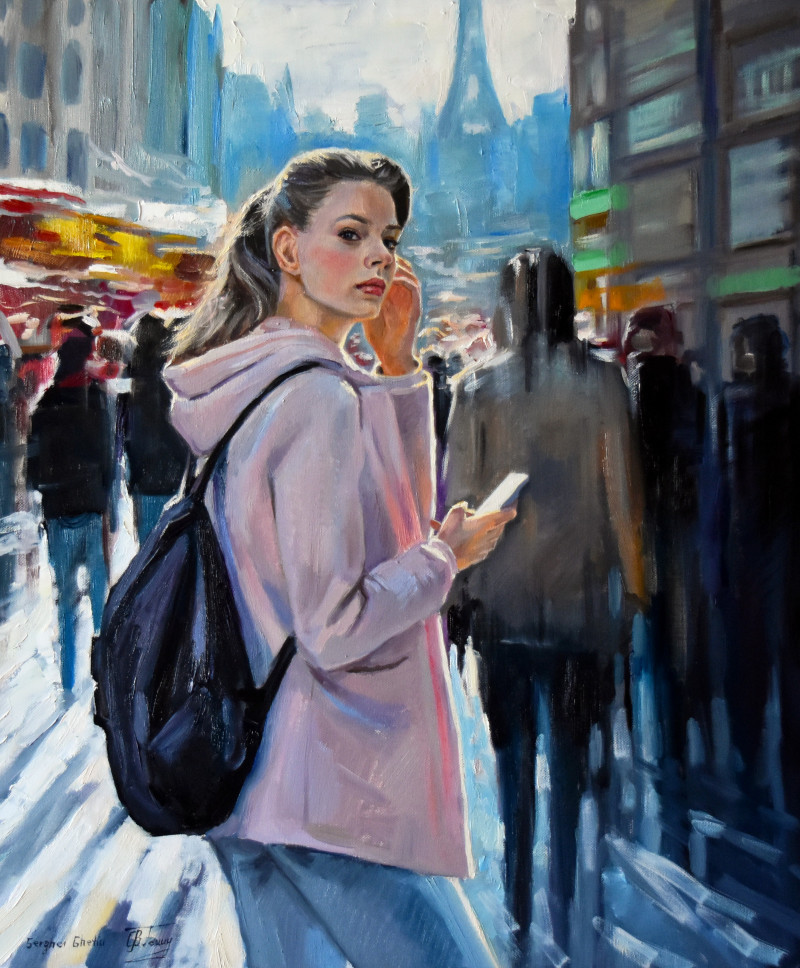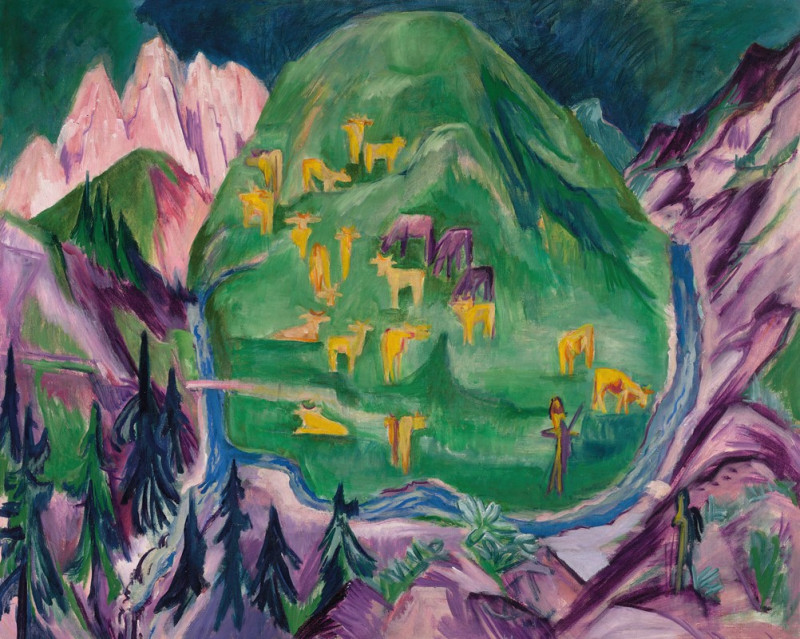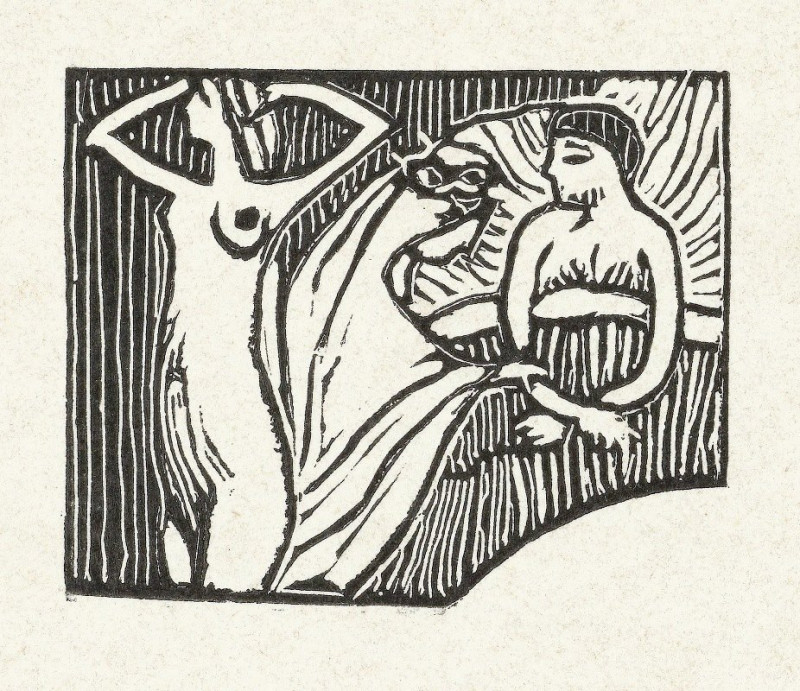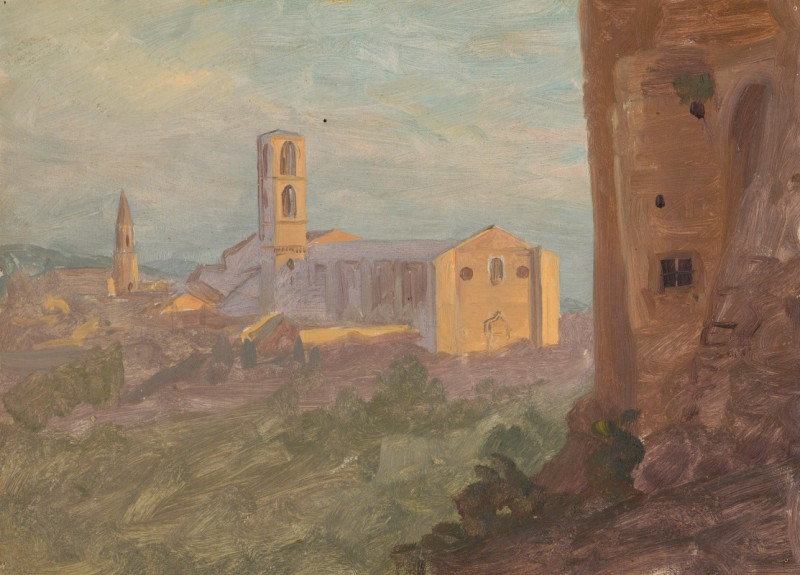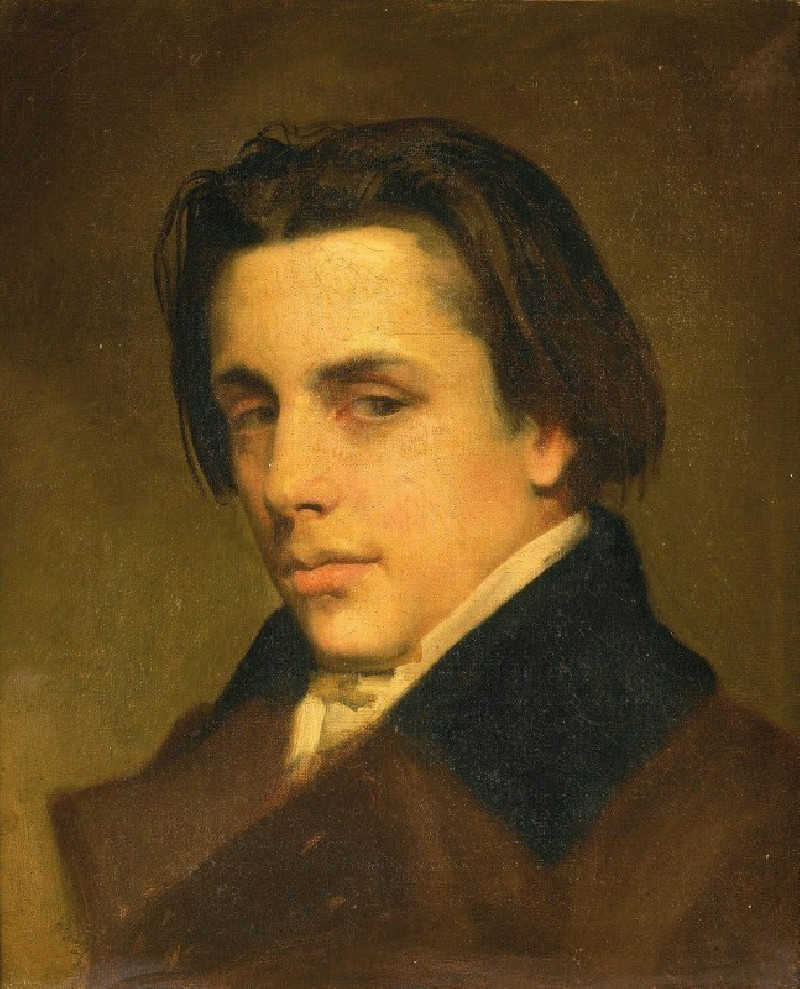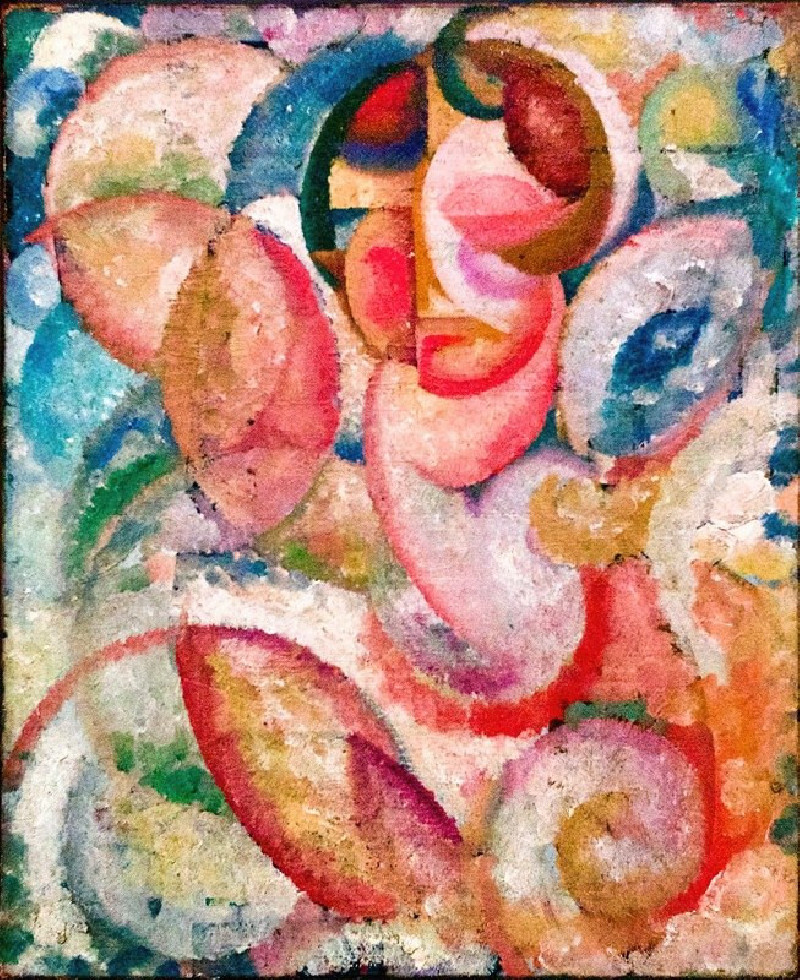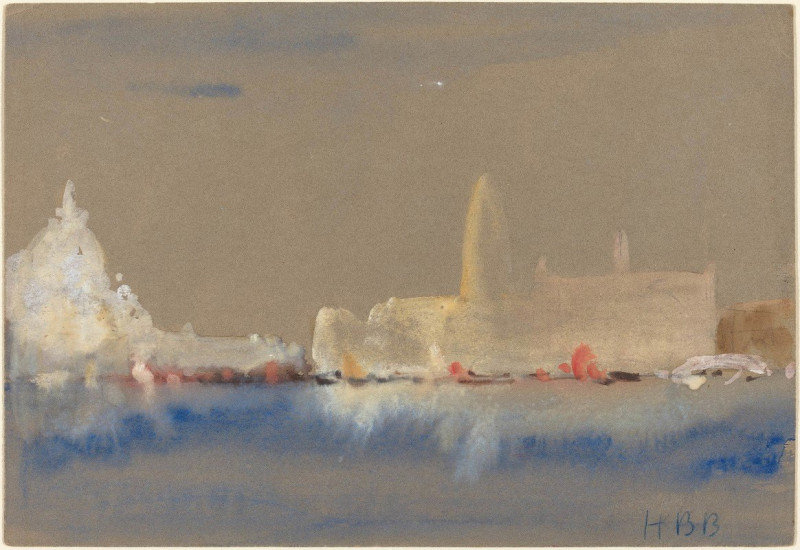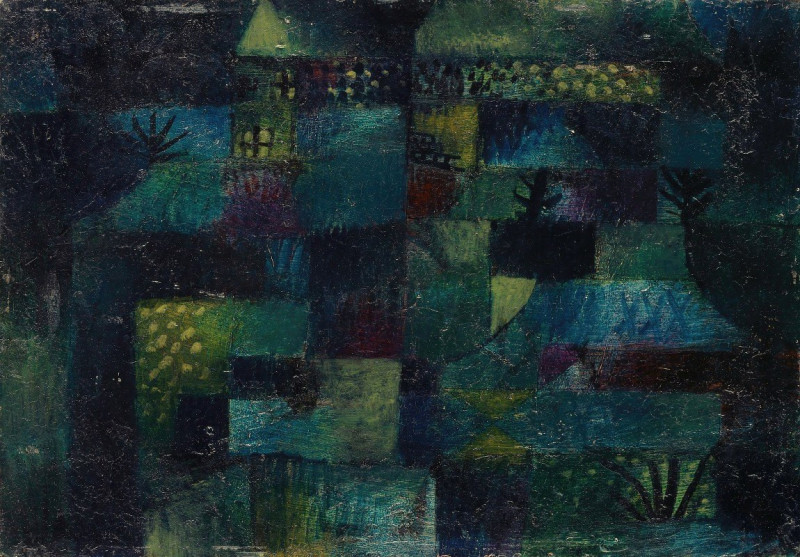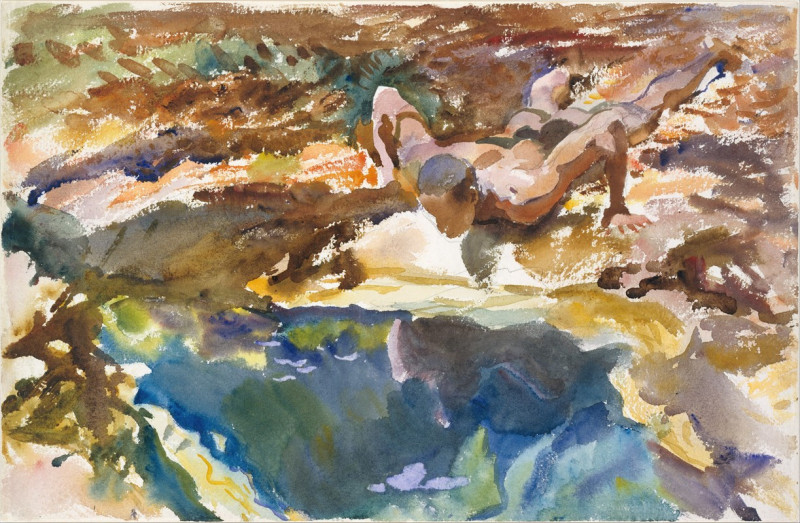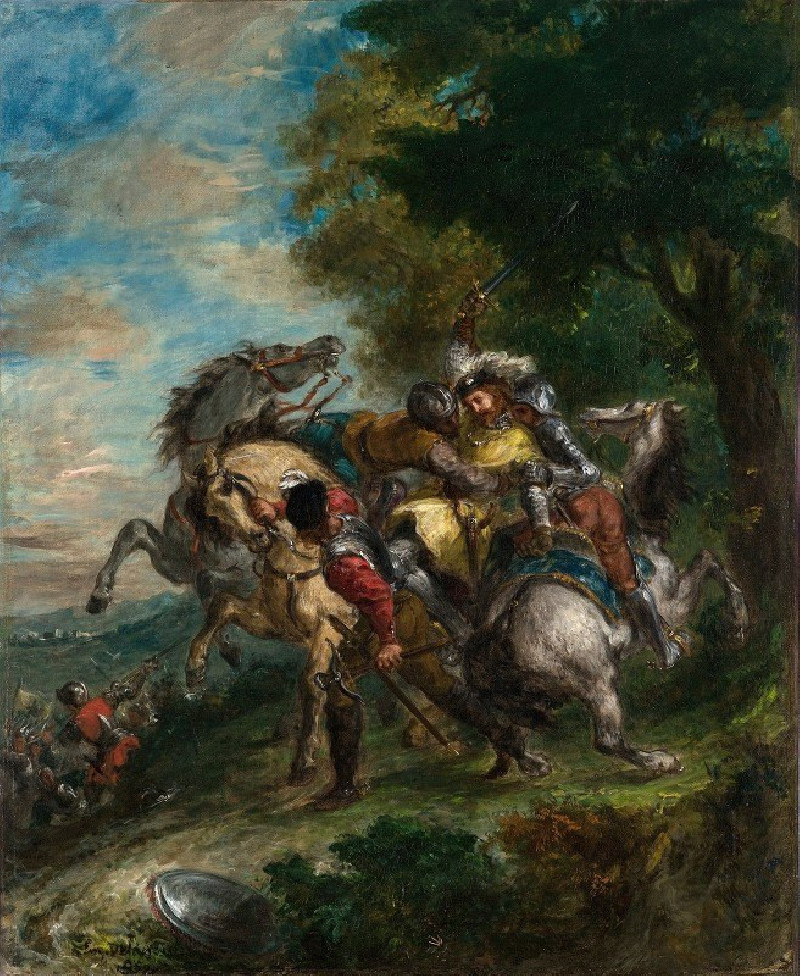In The Park
Technique: Giclée quality print
Recommended by our customers
More about this artwork
The painting "In The Park" by Henri Edmond Cross showcases an engaging scene rendered in the distinctive style of Pointillism, a technique involving the careful placement of small, distinct dots of color which, when viewed from a distance, merge together to form an image.This picturesque scene captures the lively atmosphere of a park. The image is suffused with pastel hues that create a vibrant backdrop. In the foreground, a figure draped in a large, flowing cloak, with hints of a dusky blue, dominates the scene. This person is likely observing or interacting subtly with the environment. Adjacent to this figure, and somewhat blended into the landscape due to the array of similar colors and strokes, are other park-goers who contribute to the overall sense of leisure and community typical in such settings.In the middle of the piece, there's a lively depiction of a woman riding a horse. This action injects a sense of movement and vitality into the scene, possibly capturing a moment of joy and freedom as the rider and horse move in tandem. The surrounding elements like trees, speckled lighting patterns, and possibly other visitors, are rendered in lighter, soothing tones which contrast with the more brightly colored figures, emphasizing their activities and the overall peaceful yet dynamic park life.Overall, "In The Park" portrays a serene snapshot of everyday leisure, highlighting Cross’ mastery of color and form to evoke the light and ambiance of an outdoor setting effectively.
Delivery
Returns
Henri-Edmond Cross (1856-1910) was a French artist known for his Pointillism paintings of landscapes and still life. He co-founded Société des Artistes Indépendants in Paris, where he met and was inspired by the Neo-impressionist painter Seurat. Due to rheumatism, Cross moved to the south of France, where Signac was also based. Together they abandoned the tiny colored dots of Pointillism for orderly brushstrokes in the style of mosaic. This was second generation Neo-Impressionism, and laid a path for Fauvism.


